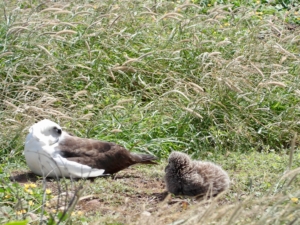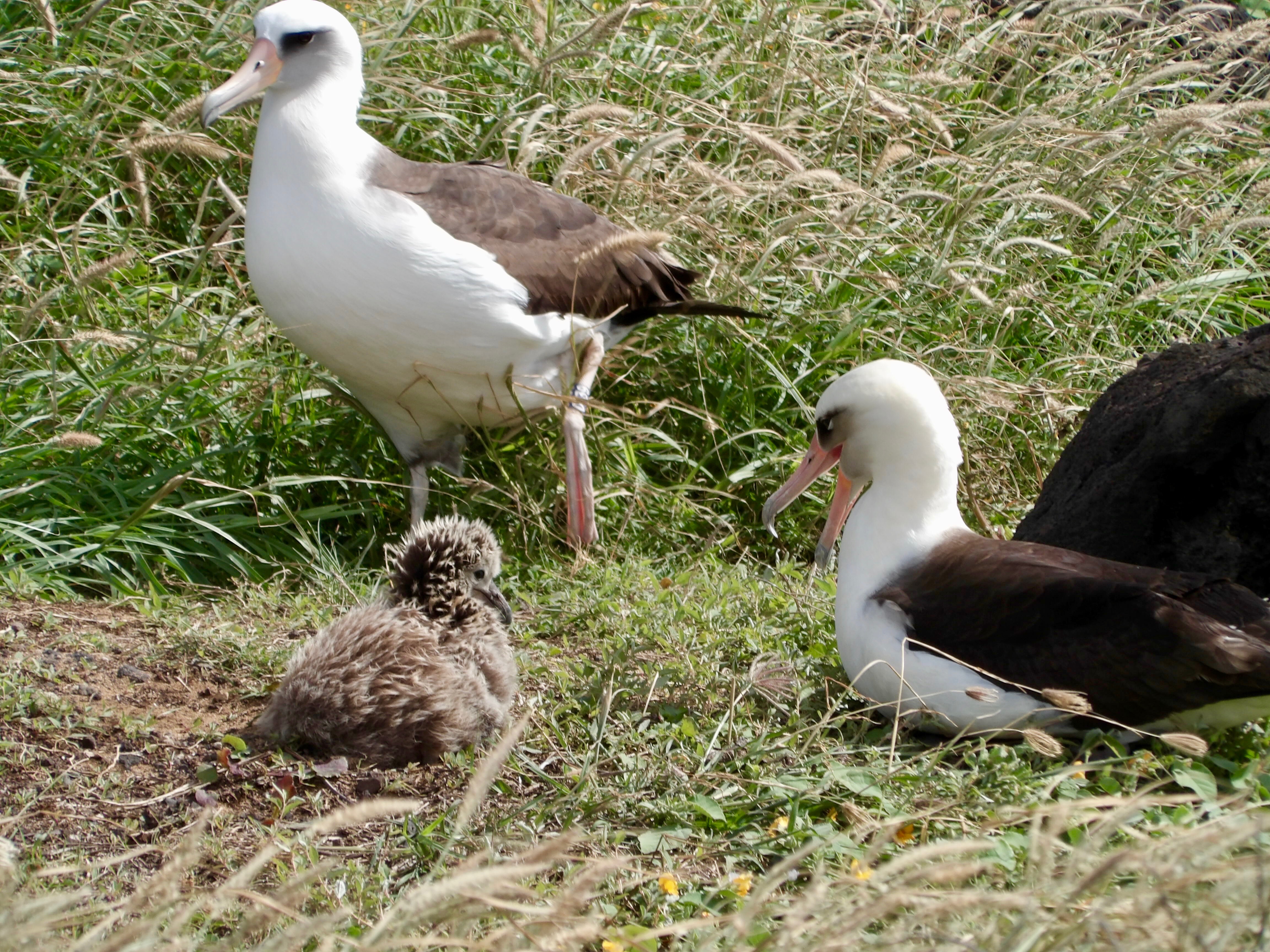Witnessing nature in action is a matter of luck and determination. Albatrosses are seabirds capable of traveling 10,000 miles in a single journey and circumnavigating the globe in 46 days without setting foot on land. Large species have wing spans of 11.5 feet, the longest of any bird. They find mates as juveniles, but don’t have chicks until they are seven or eight years old. They keep the same mates for life and return to the same breeding grounds each time.
I saw Laysan pterodactyl albatrosses soaring on air currents that were gusts of 30 mph winds for us humans on the ground (blown to bits comes to mind). Rather than flapping their wings like most birds do, they glide on air currents, which is how they can fly great distances with very infrequent wingbeats. They love the wind. White adults with black circled eyes sat with young gray fuzzy chicks that look like puff balls. Albatross couples sat together on the grassy nature reserve.
But the juveniles were where the action was taking place on the ground. They were clicking their beaks, nodding their heads together, and high stepping their feet in an elaborate courtship dance. The birds’ rare landings on earth are responsible for the awkwardness in their gait. They usually have to run along the ground, into the wind, to take off. The juvenile activity is social. It’s where they are checking out each other before deciding on a forever partner. Fledglings leave for three years before returning to meet their mates again on the same breeding ground where they were hatched.
To see this amazing site requires a 5.4 mile roundtrip hike over relatively flat terrain to the Kaena Point Natural Area Reserve on Oahu’s North Shore. But the trail was filled with rocks, giant holes, and mini-lakes of water. It took 75 minutes in the wind before arriving at the all-predators-proof gate. I didn’t have hiking shoes or the proper clothing, but the chance to see these wild birds during their rare times on land was worth the discomfort. The birds are at the refuge between November and July before taking off to roam for months over the ocean. 
In business, we need to look up and check the environment for new opportunities and changes that haven’t been there before. Take advantage of opportunities when they arise because they don’t come back. It may take effort, but the end result will be worth it. You will not ever look back and say, “I wish I had done that when I had the chance.”



Thank you for sharing your knowledge.